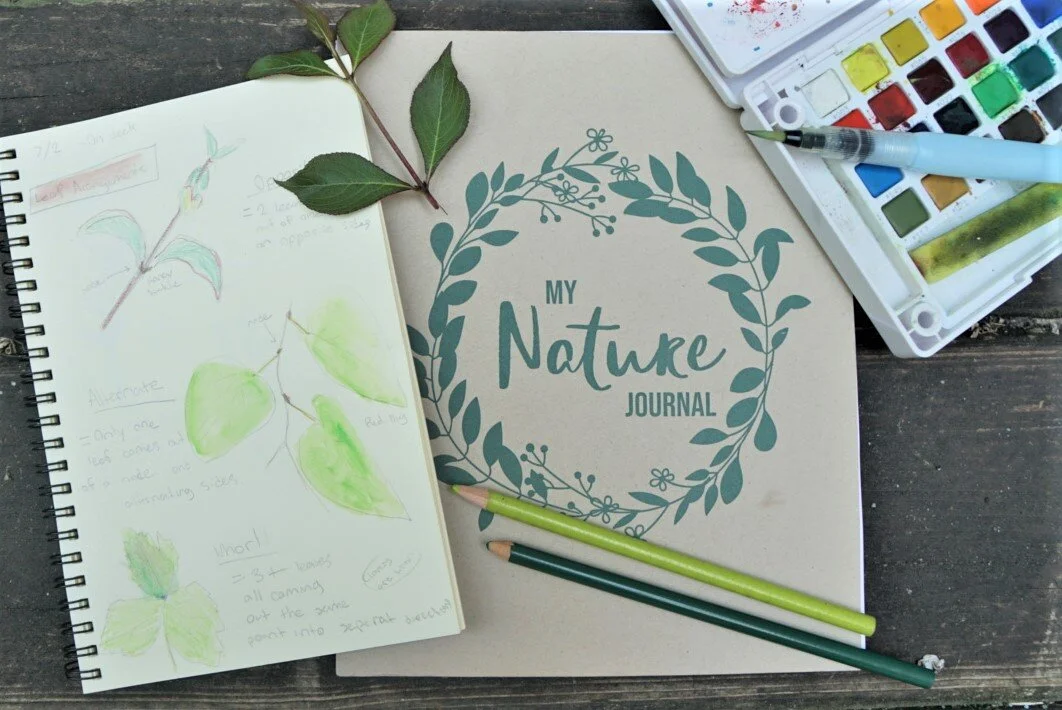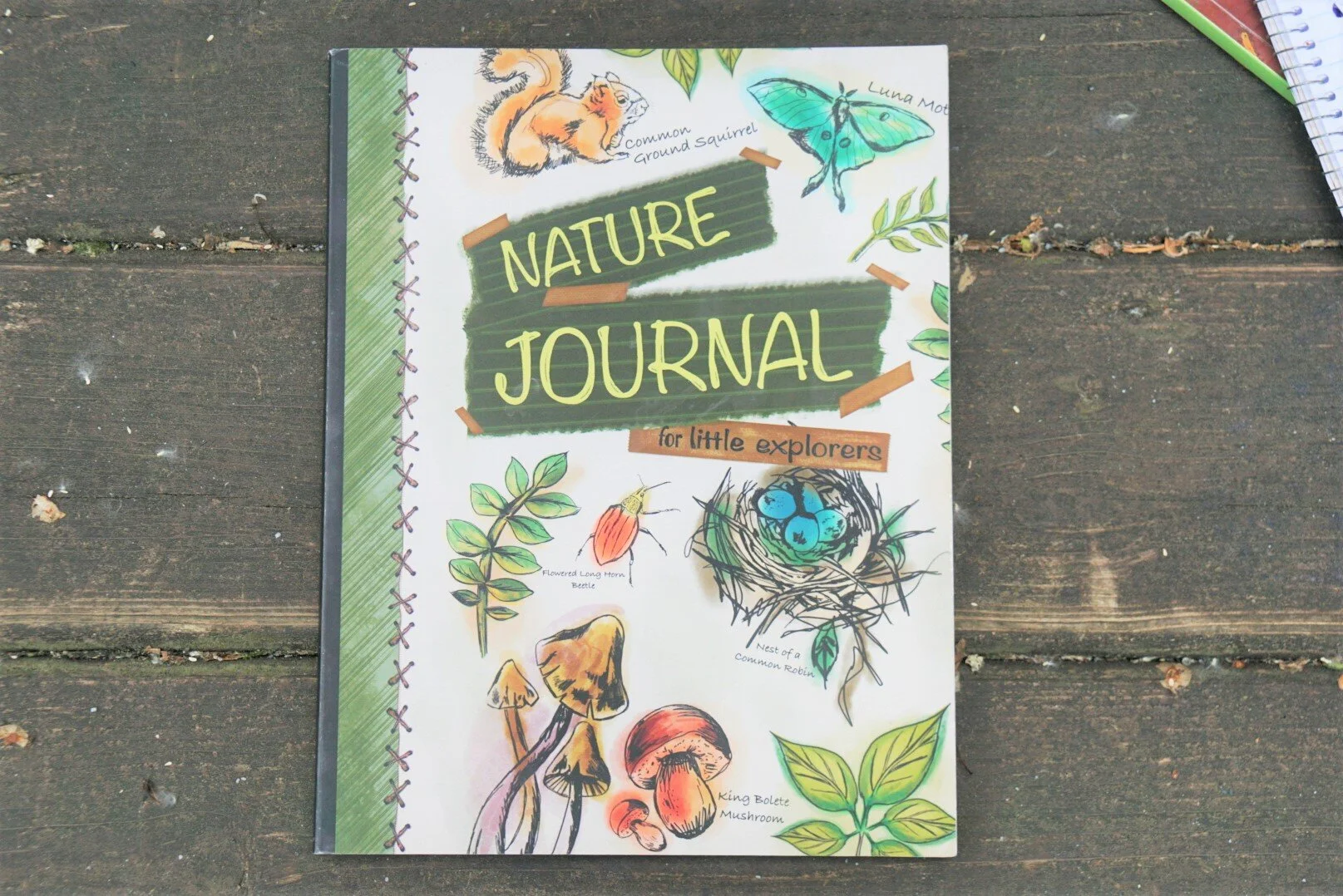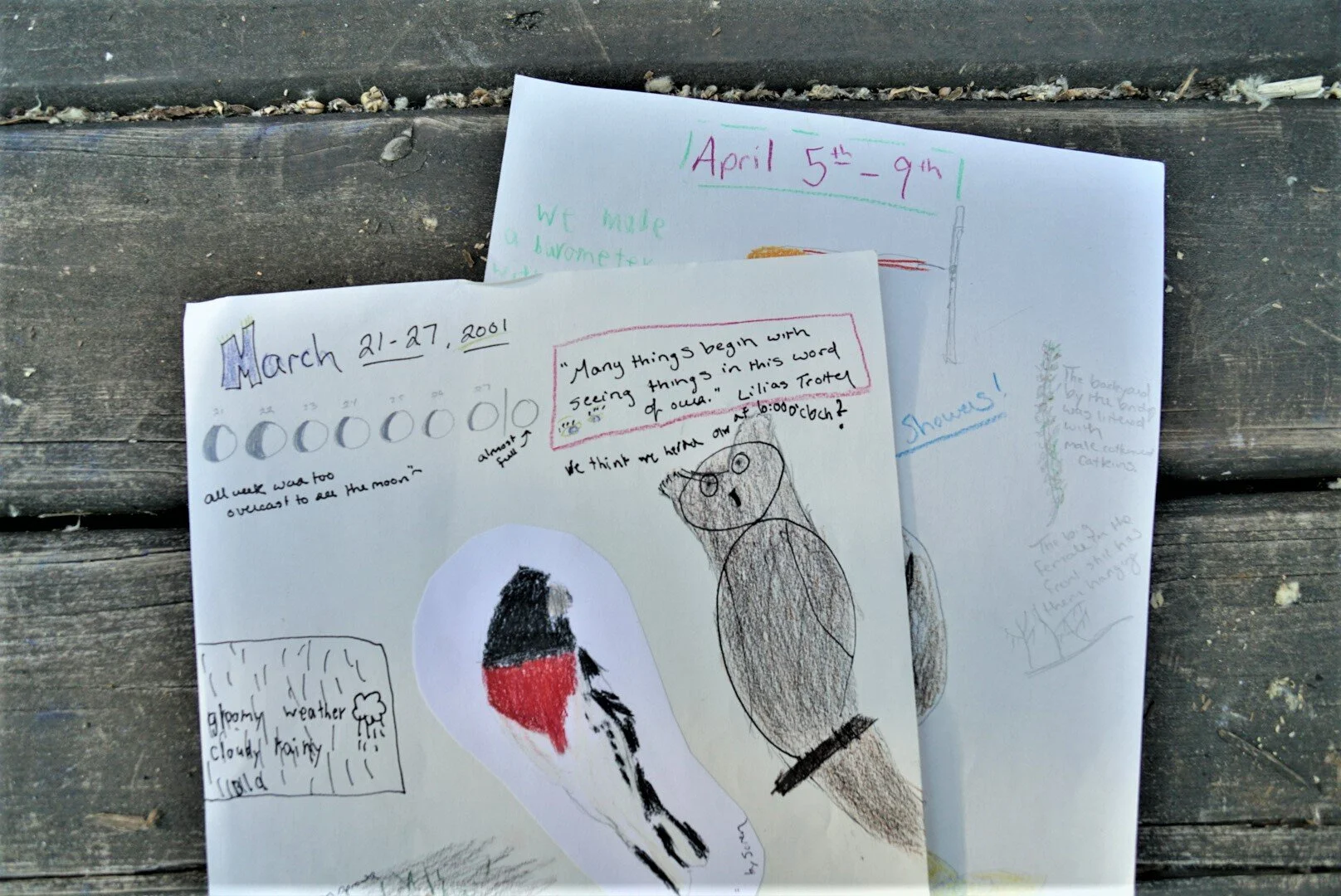Five Nature Journaling Methods: Which One is Best for You?
In the years since our first encounter with nature journaling (thanks to Jim LaMarche and The Raft--read about it here) we have tried many different approaches depending on the ages of the kids, the season, our goals, and the resources I had available. But whatever the method, the overall goal has always been the same: to draw closer to the wonder of God’s creation, and therefore, draw closer to God Himself.
Here are five different methods we have experimented with over the years from the most structured and guided to the least.
1. Nature Connection by Clare Walker Leslie
This is a wonderful workbook that contains lessons to get you started as well as monthly activities that inform, provide a seasonal focus for your observations, and help develop recording skills. If you are looking for a guide to walk with you through an entire year of wonder-filled nature study, this is the book for you.
2. Printed Journals
Journals like this can be a good place to start. For some kids, lines marked “record your observations here” and a box labeled “sketch here” is less intimidating than a blank page.
3. Sketch & Paste
Instead of sketching in a notebook, you could try recording sketches and observations on loose paper and then gluing them into a notebook later. The advantage of this is that kids can choose what to include and what to leave out (for example, the super frustrating drawing that made him cry doesn’t have to be included.) The bottom portion of the page can then be used to record explanation, description, and other details. This can be good writing, penmanship, and spelling practice as well.
The main disadvantages to this method are 1) you need to bring something firm (books, clipboards, etc.) to place the paper on and 2) those loose sheets of paper can be nothing but trouble on a windy day!
However, these notebooks, when done with care, can be a great source of pride. A few months after we had started this style of journaling, my parents came for a visit. The journals were the first thing the kids wanted to show off to their grandparents.
4. A Weeklong Group Effort
If you aren’t sure where to start, if you aren’t sure you even want to invest in a notebook, start here. Grab a piece of paper and have everyone contribute sketches and observations of something they noticed or studied closely over the course of a week. You can include weather reports, the phases of the moon, animal sightings, and what is going on in the plant world around you. At the end of the week you’ll have a summary that you made together of the nature adventures you experienced together. (Thanks to wonderfilleddays.com for this idea.)
5. Blank Journals
This is where we are now. We have been watching The Nature Journal Connection videos by John Muir Laws and taking his tips to heart. Each of us now has a small, spiral bound notebook with a backing that is stiff enough to allow sketching on the go. Like John taught us, we make observations based on what we notice, what we wonder, and what things remind us of. We record our findings with numbers, words, and pictures, using pencils, pens, and our new favorite medium, portable watercolors (see top picture).
Whichever method you choose, the most important thing about nature journaling is simply that you do it. Get outside, make observations, and jot stuff down. It’s really that simple.
And don’t forget the reason to nature journal: drawing something draws you closer to it. However, I also find that drawing with my kids draws me closer to them as well. Enjoying nature, art, and my kids all at the same time?...It doesn’t get much better than that.






